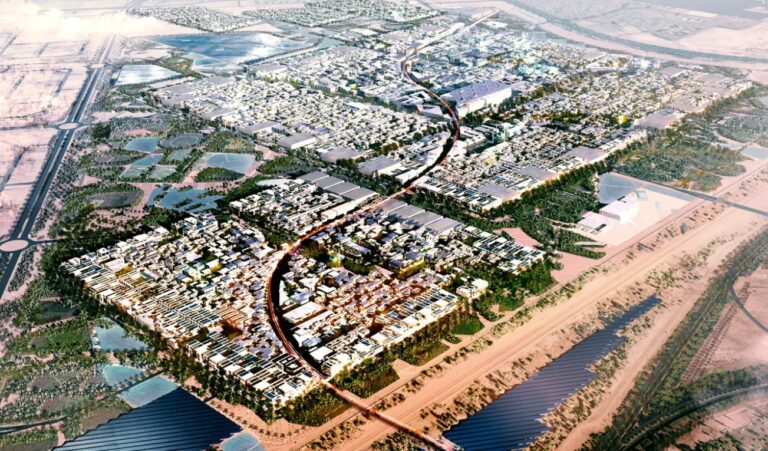Masdar, the first zero-pollution, zero-waste city, equipped with technologies to harness solar thermal energy and water purification, will rise in the heart of the United Arab Emirates. Masdar city will be the first example of a completely sustainable city.
Table of Contents
What is Masdar City
The design of Masdar City is by Norman Forster’s + Partners. London-based architect Norman Forster’s & Parteners’ urban plan for Masdar City at first glance seems pure utopia. But if one thing the frenetic development activity in Dubai and the entire UAE has taught us in recent years is that a utopia is par excellence achievable.
Masdar in Arabic means “source.” And an exceptional number of research, training, and to some extent production centers in the field of alternative energy. As well as financing and marketing companies specializing in the field, will be located here.
The Abu Dhabi Future Energy Company’s research strategy aims to create a major research hub for the energy of the future in order to develop increasingly efficient proposals and systems, driven by the realization that oil will soon be an increasingly limited and increasingly inconvenient source of energy.
Masdar will have the characteristics of a completely sustainable city
The city will be free of pollutant emissions. There will be no deposit or storage of waste as it will be 99% recycled. While the remaining 1% will end up in special composting and waste-to-energy plants.
As for the city’s water needs, this will be fished from the sea and made available after being desalinated, treated and filtered.
Masdar’s energy needs will be provided entirely by renewable sources such as solar, thermal and wind power. A total of $22 billion will be invested in the implementation of the project, of which $4 billion will be earmarked for building the city’s infrastructure.
The remaining $18 billion will be financed by direct investment, and other financial formulas specifically designed for this project. The breakdowns of functions within the city have been planned as follows:
- Area designated for residences: 30 percent
- Special economic activities: 24 percent
- Commercial: 13%
- Service and transportation: 9%
- Cultural spaces: 8%
- University: 6%
Read also: Cop28 in Dubai: the crucial themes of the international UN Climate Summit
The urban transportation system in Masdar
Being designed for total sustainability, and total absence of polluting emissions the city of Masdar will not rely on any means of transportation involving fuel. Car use will be extremely limited, and available only through car sharing.
To get around within Masdar city, residents will be able to rely on a compact network of pedestrian paths, bicycle routes, and an innovative, and efficient public rail transportation system called Personal rapid transit.
Masdar city will connect to its surroundings and the international airport through connecting infrastructure such as roads and rail network.












